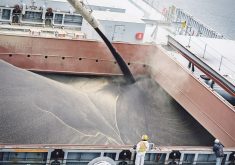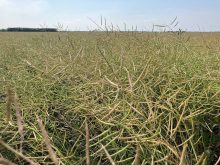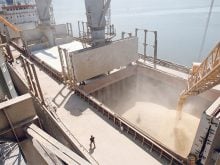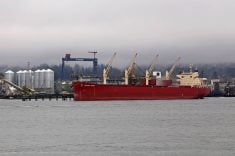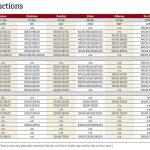Fed cattle off
The border opened to live cattle trade last week, but prices edged 50 cents to $1 per hundredweight lower.
Alberta fed cattle prices had already moved to within historic Canada-U.S. price relationships, said Canfax.
The Canada-United States basis of about $12 was not far off the historic $10-$11 range for this time of year.
Sellers were less aggressive last week due to the lower prices and to limited bids because of a packer labour-management dispute at Tyson in Brooks, Alta., early in the week.
Read Also
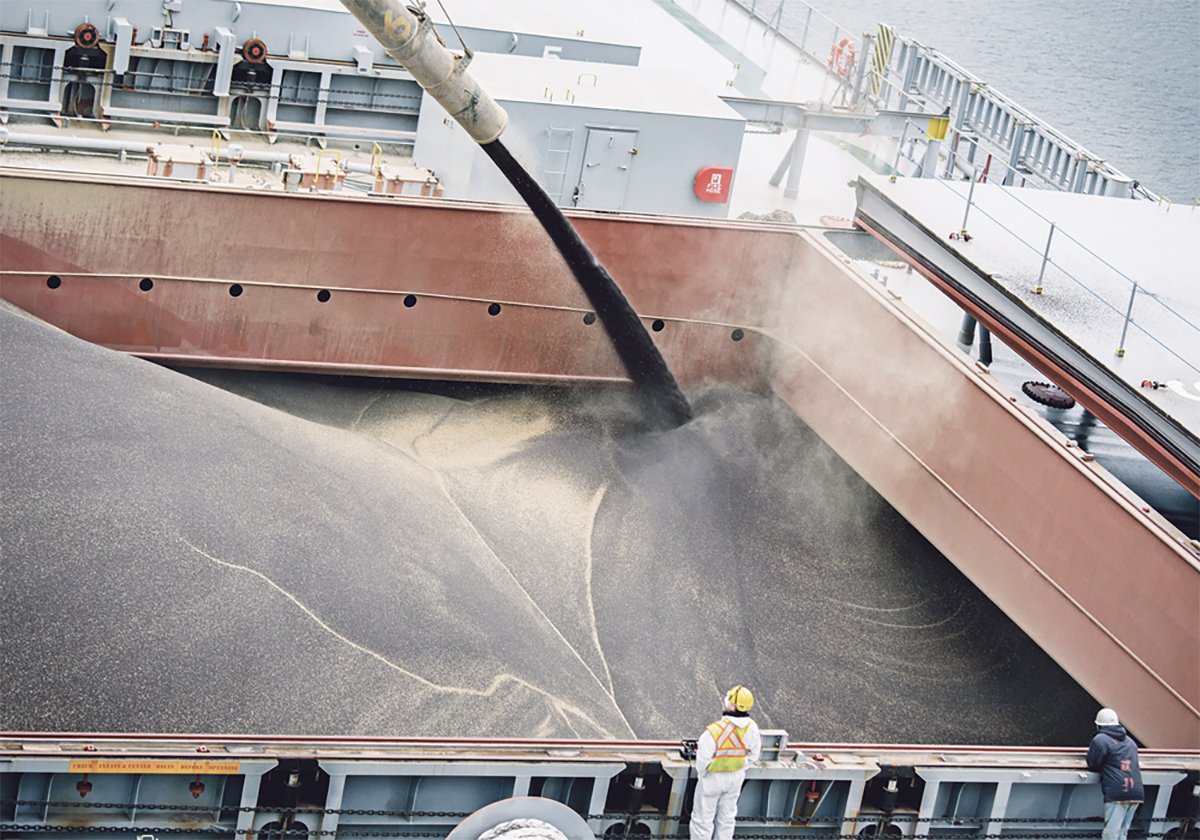
Exports off to a slow start after last year’s torrid pace
Canadian grain, oilseed and pulse exports are off to a slow start, but there are some bright spots, according to the Canadian Grain Commission’s most recent weekly export data report.
Overall 27,000 head traded, down 17 percent from the week before.
Now that feedlots are able to voluntarily release cattle early from the set-aside program, there may be an increase in available supplies, said Canfax.
Alberta prices July 21 were steers $85 per cwt. and $138.70-$139.60 flat rail while heifers were $82.80 and $140 flat rail.
The U.S. market will once again become the key determining factor in Canadian prices.
The number of cattle that are released from the set-aside this week and the number that cross the border will be important in the net available supply to Canadian packers.
Packers do not appear to have large supplies so they might need to be active buyers this week. Lower U.S. prices of late will keep a lid on Canadian price potentials.
Beef price weakens
Canadian beef cut-out values for the first week of July were down $2-$2.65 from the end of June.
Rib cuts and chuck have seen stable prices, but most other products including trim are lower.
The U.S. cutout lost $4.50-$5 U.S. last week compared to the week before. As has been the case all year, weekly U.S. slaughter rates of 650,000 or more proved to be more product than the market could readily absorb. Packers were forced to lower prices on all items.
Many retailers were short bought through the intense heat wave that hit much of the U.S. last week while also discerning the impact on cattle costs of the open border with Canada. By mid-week, the lowest prices all year on most items enticed more retail activity as well with a renewed interest in featuring beef.
In Canada, the disruptions in Brooks cut 21/2 days from its kill, resulting in less beef in the pipeline. Calgary wholesale prices for delivery this week are mostly steady at $144-$146 Cdn. on a light volume.
Feeders rise
Stronger prices and the open border brought more feeder cattle to Alberta auction markets with volumes up 30 percent to more than 14,000, 46 percent more than the same week last year.
Steers 500-700 lb. traded $5-$6 per cwt. higher and on larger volumes 700-900 lb. steers brought $7-$7.25 more. Steers 900 lb. and heavier rose $4.
Heifers 500-900 lb. rose $6-$7.50, while 900 lb. and heavier brought $8.25 more.
D1, 2 cows were mostly at $25-$35, $4 stronger than the week before, said Canfax.
Butcher bulls also jumped, trading $6 higher.
The week’s $7 gain on yearlings resulted in the Canada-U.S. basis narrowing closer to historical spreads.
Averages are expected to continue to rise so long as the news about the border remains positive.
Stronger prices may entice a few more cattle into the market, but with excellent pasture conditions across most of the Prairies, feeder cattle will remain on grass until closer to the fall run. With the border now open, slaughter facilities in Canada can slaughter young and old cattle in the same facility.This could continue to lend support to cull prices.
Stock bred cow and heifer trade in northern Alberta ranged between $350-$600.
Cow-calf pairs in central and northern Alberta were $500-$1,300 depending on quality.
U.S. cattle on feed
U.S. Department of Agriculture cattle on feed report put July 1 feedlot cattle supplies at 103 percent of a year ago and June placements at 107 percent of a year ago. Analysts on average had expected 102.2 percent for on-feed supplies and 105.3 percent for placements.
Analysts generally were looking for a rise in placements due to empty pen space and a decline in pasture conditions during the month. But placements were greater than expected and exceeded the June placement number for many previous years.
USDA also issued its semiannual cattle inventory report, which put the U.S. cattle herd as of July 1 at 104.5 million head, up one percent from a year ago. The average trade estimate was 101.1 percent.
Hogs in heat
Temperatures in the high 30s in large areas of the U.S. slowed hog weight gains and deliveries last week. In Iowa two weeks ago, average slaughter weights dropped to 260.7 lb. compared to 262.9 lb. the week before.
Pork prices rose, helping packers increase their margins into profitable territory.
Iowa and southern Minnesota cash hogs July 22 were $50 US at plants, the same as the week before.
The USDA pork carcass cutout based on a 185 lb. carcass, 51-52 percent lean, was $70.85 July 22 compared to $69.26 the week before.
Canadian hog prices have risen. Manitoba Agriculture noted that it might partly be due to better quality hogs entering plants. For the past couple of weeks many hogs have suffered from fly and mosquito bites resulting in payment discounts, some significant.
Lambs lower
Ontario Stockyards reported 2,604 sheep and lambs and 164 goats traded last week. Light lambs sold at prices $10 Cdn cwt. lower. Heavy lambs, sheep and goats sold barely steady.




